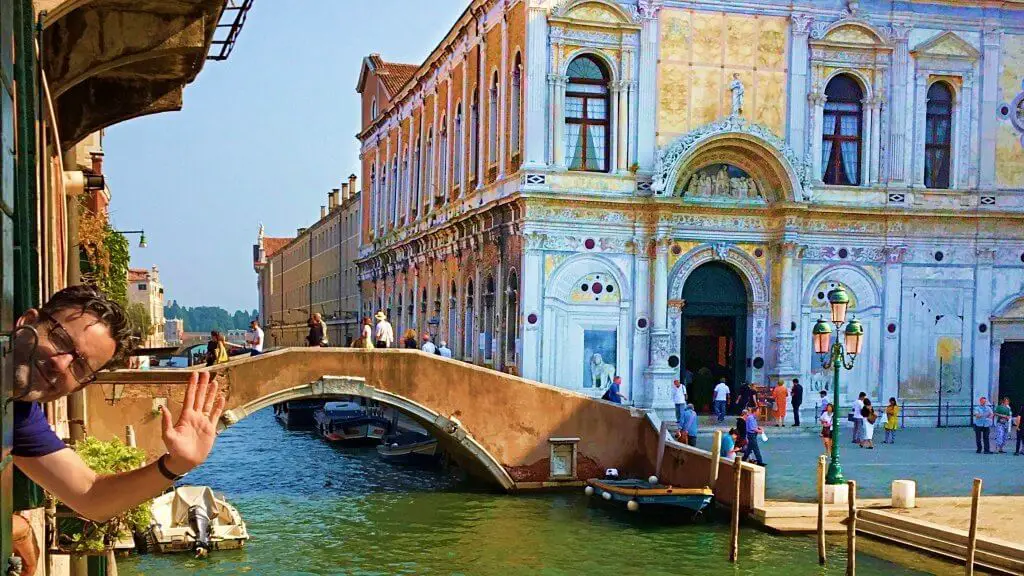
Europe holidays are hard to beat. There are so many famous cities and sights in Europe that it can be like walking around in a movie,. However, in addition to sightseeing, there are plenty of incredible unique travel experiences in Europe that allow you to interact with the people, culture and environment.
Traveling through Europe is also easier than most continents because the transportation is frequent and easy and English is widely spoken (at least in the main touristy areas). Another thing that’s great about travel around Europe is that you don’t have to go very far before you are in a completely different country with a completely different culture. These are just some of the reasons that many people visit Europe on their first international trip.
Europe Travel Guide
Having a great trip across Europe depends on how well you plan it. You want to make sure that you stay in the right places, know how to get around, and plan some great activities. And, of course, leave time for the random things that happen that make all travel so special.
My Europe trip planner will help you when you are planning a trip to Europe. It gives you information on experiential travel experiences plus practical travel tips to Europe to make your travels easier.
Please note this post may contain affiliate links, which means we may receive a commission, at zero cost to you, if you make a purchase through a link. Please see our full Disclosure for more information. If you have any questions, please let me know.
Country Guides
There are so many top European destinations it’s hard to narrow them down, but some of the best European countries to visit include:

FRANCE
France is one of the best places to visit in Europe because there are so many iconic things to see and do. The museums are world class (don’t miss the Louvre and Musee D’Orsay in Paris); the food and wine is incredible (you can drink champagne in Champagne); and the sights are famous (climb to the top of the Eiffel Tower for great views over Paris). However, there are also so many other experiences you can have.
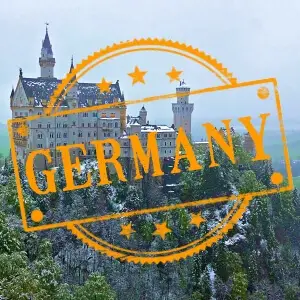
GERMANY
Germany is one of the classic European countries to visit. Take a cruise down the Rhine, visit fairytale castles, eat gigantic pretzels, drink great German wine or beer, and stop off in picturesque painted villages.
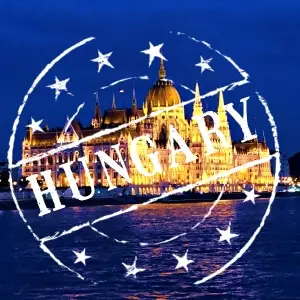
HUNGARY
Hungary is one of top places in Europe to visit. Budapest is beautiful – split into two halves Buda and Pest by the Danube River. Don’t miss taking a cruise down the Danube at night, when the river glows like molten gold. It is worth getting out of Budapest too and exploring the surrounding countryside.
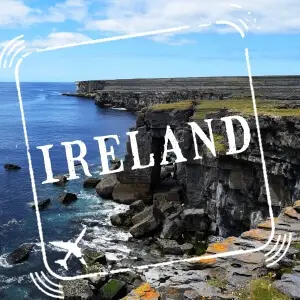
IRELAND
Ireland must be one of the best countries to visit in Europe for first time travelers (though you can go there any time, of course) because it is so easy to get around and the people are so friendly. The country is GREEN (and yes, that means it can rain a lot). It’s perfect for cycling and hiking, or just hanging out with friendly people in a local pub. Rent a car or hop on a remote Post Bus to discover out-of-the-way places.
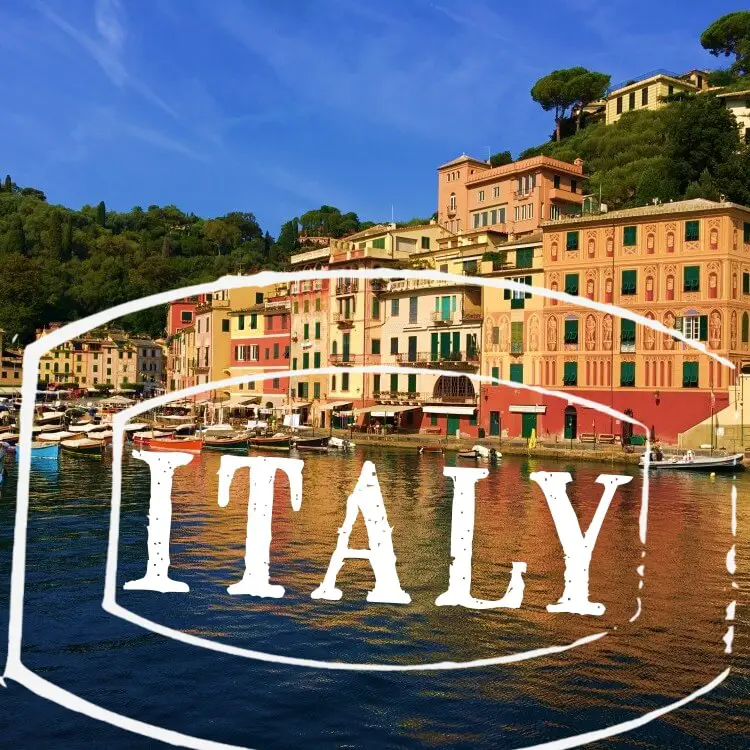
ITALY
Italy is another of the best places to travel in Europe because there is so much to see and do. There are iconic sights such as the Coliseum and Leaning Tower of Pisa; gorgeous hill towns, stunning beaches; and of course, great food and wine. There are also so many different experiences you can have hiking, cooking, eating and sailing.
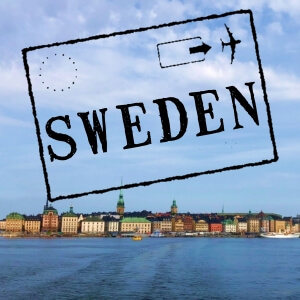
SWEDEN
Sweden is often overlooked as a top Europe destination, but shouldn’t be. See the midnight sun or the northern lights; sail around pine-covered islands; enjoy fika (more than just a coffee break); learn to bake cinnamon buns; see moose and beavers; kayak around canals and cycle through city parks; step back in time and admire the simple beauty of colored wooden houses; visit museums devoted to ancient sunken ships, ABBA and schnapps; and much more …
Best Things to Do in Europe
For me, the best European vacations are those that not only see the famous sights and visit the famous museums, but also have plenty of interactive experiences. There are so many fun things to do in Europe that finding unique experiences in Europe is not difficult.
Are you wondering what to do in Europe? It’s hard to go wrong with these amazing experiences:

ROW A VENETIAN GONDOLA
Riding a gondola in Venice is a definite must do in Europe. However, why stop there? Learn how to row a gondola yourself. Half-day lessons help preserve ancient traditions. Enjoy one of the most unusual things to do in Europe.
Read more about learning to row a gondola in Venice here

CHEESE AND WINE TASTING
France is famous for its wine and cheese, which is why a wine and cheese tasting workshop in Paris is one of my top experiences in Europe. Learn all about different wines and cheeses and what happens when you pair them together.
Read about the cheese and wine tasting workshop in Paris here
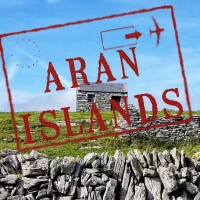
CYCLE PAST ANCIENT RUINS
If you are looking for more adventurous things to do in Europe, then rent a bicycle and cycle around Ireland’s Aran Islands. The islands are covered in tiny fields and stone fences and scattered with the ruins of ancient forts.
Read more about cycling the Aran Islands here
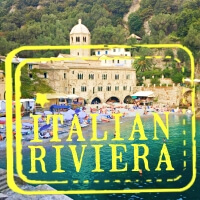
HIKE TO SAN FRUTTUOSO
This hike is one of my best experiences in Europe. First a ferry to Portofino, then hike to San Fruttuoso, a tiny hidden cove accessible only by boat or foot. There is a gorgeous 10th century abbey, restaurants and the crystal-clear sea.
Read all about the Portofino – San Fruttuoso hike here
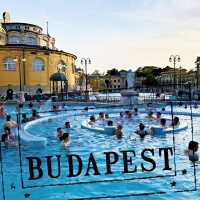
SOAK IN THERMAL BATHS
Budapest is famous for its baroque thermal baths. Soaking your cares away is another of the unique experiences Europe has to offer. One of the really cool things to do in Europe is to go to one of the pool parties held there on summer weekends.
Read about the top two thermal baths in Budapest here
Top 10 Things to Do in Europe
In addition to the above five activities, add:
6. Sailing the archipelago in Stockholm, Sweden. Stockholm is a beautiful city set on dozens of islands and surrounded by an archipelago of thousands of more islands. There is no better way to experience it than sailing around the islands. Check out this sailing tour on a small sailboat. You can even try your hand at sailing the boat. Enjoy lunch at an isolated bay and even try swimming in the Baltic Sea if you dare (yes, it’s cold, but you will get bragging rights!).
Check availability for a Stockholm Sailing Tour here.
7. Making pasta in Rome, Italy. Learning to make pasta from scratch on the rooftop terrace of an inner-city apartment was one of the highlights of my visit to Rome. Read all about it on my blog post here.
Book your space in the Roman pasta making lesson here.
8. Wine tasting in Rioja, Spain. This is one of the primary wine-making areas in Spain and is incredibly beautiful. Take a wine tour through Rioja, where you will visit three wineries, drive through gorgeous countryside and have lunch in a medieval village.
Book your wine tour in Rioja here.
9. Chasing the northern lights in Norway. The northern lights (aurora borealis) are spectacular streaks of color waving through the sky at night. They are unreal and other-worldy. Check out the Northern Lights Chase from Tromso. It’s a small group tour. Of course, there are no guarantees, but on a clear night, your chances of seeing the northern lights are good.
Check availability for the Norway Northern Lights chase here.
10. Hiking to a fairytale castle in Bavaria, Germany. Check out the Neuschwanstein Castle tour where you can hike up to the castle for spectacular views, take an alpine bike excursion through the Bavarian countryside and visit inside the castle.
Check availability for the Bavarian Castle with private tour here.
Where to go in Europe: Itineraries
A Europe travel itinerary can be anything from a layover, a long weekend or several months, depending on how long you have, what kinds of things you like to do and your budget. Classic itineraries include:
- Italian Hill Towns [2 weeks]: Rome – Florence – Venice via Umbrian and Tuscan hill towns (Perugia, Spoletto, Verona)
- French wine country [2 weeks]: Loire Valley – Champagne – Bordeaux
- Spanish Andalucia [2 weeks]: Seville – Jerez – Ronda – Malaga – Granada – Cordoba
- Swiss Alps [2 weeks]
- Scandinavia [2-3 weeks]: Stockholm – Tromso – Fjords – Bergen – Oslo
- Central Europe [2 weeks]: Prague – Vienna – Budapest
Europe Trip Cost
The cost of traveling through Europe can vary a lot. Eastern Europe is cheaper than the west; northern Europe is cheaper than the south; smaller towns are cheaper than big cities; hostels are cheaper than hotels; AirBnB apartments are often cheaper than hotels; lunch is usually cheaper than dinner…
I typically spend around $100-$150 on small, interesting hotels or apartments, about $30-50/ day on meals and about $10/ day on transportation (because I take public transport whenever I can). I spend money on entrance to museums, activities and cultural tours, because this is what I like to do when I travel. This can set me back $40-80+/ day depending on what I am doing.
Essential Info for a Euro Trip
There are some essential things to know about Europe.
Currency
One of the things to know before going to Europe is the currency of the countries you will be traveling to. The most common currency in Europe is the euro (EUR €). The area where the euro is used is called the Eurozone, and it comprises 19 of the 28 EU countries, plus Andorra, Monaco, San Marino, Vatican City, Montenegro and Kosovo.
Other major currencies in Europe include the British pound (GBP £), Russian ruble (RUB ₽), the Swiss franc (CHF) (also used in Lichtenstein) and ‘crowns’ in several countries including the Czech koruna (CZK), Norwegian krone (NOK), Danish krone (DKK), Swedish krona (SEK) and Icelandic króna (ISK).
Check here for the exchange rate of the countries you are visiting.
Visas
Other things to know before traveling to Europe are about the visa requirements. If you are wondering “What do I need to go to Europe?”, well, visas are easier in Europe than most places, in general, but Europe travel requirements are not the same throughout the entire continent.
A huge chunk of Europe is a passport-free zone, so you travel between these countries without needing an additional visa. This area is called the Schengen Zone. If you are from a country that doesn’t require a visa to these countries, then you won’t need a visa for any of them, and can travel freely between them. If you are on a train from Austria to Germany, for example, you won’t even notice that you have crossed an international border (until you get a cell phone alert that you are accessing a different telephone company). If you need a visa, you can get one for one country and that serves all of them.
Currently, the Schengen Area consists of 29 member countries: most of the EU countries, except Ireland, which opted out and Croatia and Cyprus, which are in the process of applying to be included. Norway, Iceland, Switzerland and Lichtenstein are also part of the Schengen zone, although they are not members of the EU. The Azores, Madeira and the Canary Islands are special members of the EU and part of the Schengen Zone. Monaco, San Marino and Vatican City are not members of the Schengen Zone, but also have open borders. The UK is not part of the Schengen Zone.
Bulgaria and Romania have officially joined the Schengen Area in March 31st, 2024. This change includes the implementation of Schengen rules, such as visa issuance and the removal of internal air and sea border controls in both countries, as reported by SchengenVisaInfo.com.
There are some Eastern European countries that you will almost certainly need a visa for.
This is not such an issue these days with so many Schengen area countries, but always check visa requirements for countries you are transiting through if you are travelling overland. I was kicked off a train at 4:00am because I didn’t have a transit visa for a country I was going to be in for about two hours. It never even occurred to me to get a visa for that country because I wasn’t getting off of the train there, but it turns out I still needed a transit visa!
For visa requirements, check out your home country’s official government visa websites:
For citizens of other countries, use this helpful website (though it’s best to always check with the embassy as well).
Time Zones
Another of the things to know when traveling to Europe is the time. There are several time zones in Europe.
- The UK, Portugal and Iceland are in one time zone (Greenwich Mean Time (GMT), which is 4 hours ahead of the United States’ Eastern Standard Time (EST).
- Most of Western Europe is 1 hour ahead of GMT and 5 hours ahead of EST.
- Finland, the Baltic States, Ukraine, Romania, Bulgaria, Moldova and Turkey are 2 hours ahead of GMT and 6 hours ahead of EST.
- Belarus and the European part of Russia are 3 hours ahead of GMT and 7 hours ahead of EST.
Languages
Almost all countries in Europe have their own languages. However, English is widely spoken, especially in Western Europe, in the main tourist areas and by young people, who learn it in school in most countries.
In some parts of Europe such as Scandinavia, all you need to do is say “hello” in English and whoever you are talking to will know to reply to you in English. When I was in Finland, I asked several people if they spoke English and they all replied “of course!”, so I stopped asking. In other places, it is polite to ask people if they speak English.
In smaller villages and less popular tourist countries and the further east you go in Europe, you may still meet people who don’t speak English (though hotel staff usually speak at least a little). It is always a good idea to learn a few basic phrases of the local language at least. Even if people do speak English, they will usually appreciate your efforts to speak their language.
How to get to Europe
Getting to Europe is easy, though it can be far depending on where you are coming from. From the east coast of the United States, flights are only about 6 or 7 hours, so it is even possible to take a visit to Europe over a long weekend.
Most countries have the main airport in the capital city and also have smaller regional airports in other cities. Many major cities have a second or even third airport, though these are often for short haul flights or budget airlines. The national airlines of each country have hub cities, so you can often end up changing flights in those cities. For example, Germany’s main airline, Lufthansa, has its main hub in Frankfurt, not Berlin. London has two main airports, Heathrow and Gatwick, but two other smaller airports.
You can check prices on flights on Skyscanner or Momondo.
How to Get Around Europe
What’s the best way to travel Europe? Well, there are several options and which one you choose will depend on your budget, how much time you have and where you want to go.
There are so many incredible places in Europe to visit that it can be tempting to try and cram them all in, but I tend to stick to one or two countries or cities and explore them in more detail, so that I can get to know them better and have time for more cool experiences.
However, if you want to get an overview and see as many of the best places to go in Europe as possible, then you will want to cover a lot of ground quickly. There are several options:
Plane
If you are wondering how to travel Europe quickly, then a good option is to fly. There are several really cheap budget airlines in Europe. Flights are often much cheaper than land travel. However, take notice of which airports they fly in and out of. Budget airlines often use small airports that are much further away from the center of town than the main airlines. If you have a connecting flight, ALWAYS check that you are flying in and out of the same airport. Even if you aren’t, check how much it costs to get from the airport to the center. The additional ground transfers cost may outweigh the savings by flying a budget airline. Even more mainstream airlines often have very cheap flights to nearby cities.
I like to use Skyscanner and Momondo to check for the cheapest flight. Both of these websites search budget airlines and regular airlines to find the cheapest flights for you.
Bus
Europe travel by bus is slower – and cheaper – than the other options. Most countries have their own national bus company, but you can take international buses too. I did this when I was younger and took the bus from Amsterdam to London and from London to Paris, for example. If your main concern is budget, then Europe bus travel is probably your best choice.
Train
I love to travel Europe by train. Rail travel in Europe is still very popular and common, so trains are frequent. European rail travel networks are extensive in almost every country, and there are many international lines. They also give you the chance to see the countryside, which flights obviously don’t. High speed trains like the TGV in France make traveling between two cities very fast too.
Train travel in Europe can be expensive, but doesn’t have to be. There are several rail Europe ticket options. The EuRail Pass makes it very affordable. The pass is best for trips where you will be doing a lot of Western European rail travel especially. Eastern Europe is cheaper and the rail pass may not be your cheapest option there. Check out different EuRail options here.
For rail travel in Europe when I am just taking a few train trips or when I am mostly in Eastern Europe, I buy tickets through Omio. You can buy seat allocations for many trips. You can also buy international tickets. They have explanations of the tickets in English, so it is easy to see the carriage and seat number. Buying tickets online before you go saves time lining up at a ticket office at a train station in Europe and also gives you peace of mind knowing that you have a seat on the train you want. Buy train tickets on Omio here.
Car Rental
If your budget extends a little further and you are happy to drive, then the best travel in Europe can be by car. Having a car gives you greater flexibility for where you can go and where you can stop along the way. A road trip through the hill towns of Umbria in Italy is more flexible than taking the train, for example. You can stop and take photos, visit wineries, and stop off for a snack along the way. The journey is as good as the destination!
Car rental is easy, but not always cheap. The most common – and cheapest – cars tend to be manuals/ shift sticks. I only drive an automatic and have paid extra for an automatic car. I also like to rent a small car, as streets in the historic center of old medieval towns in Europe can be extremely narrow and difficult to navigate in a bigger car.
The other thing to be aware of is that in some cities, the drivers are kind of crazy and if you are a timid driver, it can be overwhelming. I did NOT drive in Rome, but at the end of my Roman holiday, took a taxi to the airport and picked a rental car up there, so that I didn’t need to drive in the city.
I like to use RentalCars.com because they search for the best prices from many companies. Check out car rental options here.
Another option is to tour Europe in a motorhome/ RV. You’ll have flexibility and save money on accommodations.
Where to Stay in Europe
Accommodation is easy to find and comfortable in most of Europe, but not that cheap, especially in western Europe. As with everything, the further east you go, the cheaper it gets.
For those on a budget, there is an extensive system of hostels across Europe. When I was younger, I always stayed in hostels. Some in large cities can seem very institutional, but some in the countryside are in old farm houses and mansions and have lots of character. In Stockholm, there is even a hostel in a ship.
There are also plenty of campsites and some countries like Sweden have a rule that you can camp anywhere for free as long as you aren’t within site or sound of any permanent houses.
For those seeking more comfort, there are plenty of hotels. There are chain hotels, of course, but plenty of cute pensions (small hotels, often family run) and boutique hotels. In some places, people rent out rooms in their houses. With the Internet, you can easily find an apartment on AirBnB or other booking sites like booking.com.
Unique Hotels in Europe
There are also options for something more unusual. Check out just of a few of the hotels that are an experience in and of themselves:
- Utter Inn, Sweden. A tiny one-room red cabin built on a platform in a lake. Check prices and availability here.
- Langley Castle Hotel, UK. Stay in a traditional English castle and feel like royalty. (4 stars). Check prices and availability here.
- Icehotel, Sweden. An iconic winter adventure where the entire hotel is made of ice. (4 stars) Check prices and availability here.
- Treehotel, Sweden. This takes the ‘tree house’ to a whole other level. A modern rectangular block perched high in a tree. (4 stars) Check prices and availability here.
Best Time to Travel to Europe
You can visit Europe any time of the year, but depending on the country you go to, some times of the year are better than others.
The peak travel season is summer (June – August). In summer, opening hours are often longer, transportation can be more frequent and the mountains are free of snow for hiking. However, most Europeans have long breaks during this time, so it can be very crowded. It is also the hottest time of year; prices are highest and some things can even be closed in July or August because everyone is on vacation. That being said, this is a great time to visit northern areas like Scandinavia, as the days are long (and seeing the midnight sun is fun!).
My favorite time to travel to most countries is actually the shoulder seasons spring (March-May) and fall/ autumn (September/ October). Most people are back at work, so it is less crowded and cheaper and the weather is still great and things are still open. May and September are my favorite months to travel to Europe.
Winter (November – February) can be cold and dark, especially in the north, but the southern countries can be cool and lovely. December sees lots of holiday markets and seasonal festivals, so this can be a magical time to visit many countries. Plus, if you like skiing and snowboarding, this is the time to do it, and you can enjoy many winter experiences such as chasing the northern lights, dog sledding in Scandinavia and enjoying a sauna or thermal bath.
Travel Tips for Europe
Europe is generally safe to visit. Streets and transportation is mostly safe and tap water is fine to drink. In fact, many countries in Europe are trying to reduce use of plastics, so tap water is freely available in restaurants. Take a water bottle (I like this one) and fill up in your hotel for the day.
However, you should take the usual basic safety precautions. For example, when taking trains, don’t fall asleep and leave your bags unattended. Petty theft can happen and you don’t want to wake up to find your luggage gone. Use a Safepack (I have this one) and/ or chain your luggage to the rack (you can buy a light metal wire for this purpose here).
Of all the Europe travel tips I can give, my main one is to get travel insurance. Europe is generally pretty safe, but things can happen anywhere, anytime, and you want to make sure that you are covered if you get sick or lose something. I have written a detailed Guide to Buying Travel Insurance, so if you have questions about travel insurance, read more here.
I recommend Travelex. It has coverage for all you’ll need. You can choose the best travel insurance plan for your trip here or get a quote right now:
Best Booking Resources for Travel to Europe
Are you ready to plan a trip around Europe? These are the resources I use to plan my Europe holidays.
For booking tours and activities
- Viator They have great activities. You can search by categories such as Classes & Workshops and Cultural & Theme Tours.
- Get Your Guide My other go-to activity company. They also have subcategories you can use to filter out tours you aren’t interested in taking
For booking flights
- Skyscanner They search a huge database of flights, including many budget airlines, to find the cheapest price
- Momondo I always check this website too, as sometimes there can be a difference of a few dollars between the sites.
For booking trains
- EuRail Get a EuRail Pass if you are travelling by train quite a bit.
- Omio Great for isolated train trips. Saves money and time spent lining up at train stations when you are on vacation.
For finding a rental car
- Rentalcars.com I use this website to find the cheapest cars for my trips. Europe is a great place to drive around, as having a car gives you so much independence.
For booking accommodations
- booking.com They have a huge selection and you can filter by price, location and type of accommodation.
- Air BnB For longer stays in the same place, it can be nice to live like a local and stay in an apartment. They can also often be cheaper than a hotel.
For buying gear
- Amazon A huge selection of travel goods.
- REI They have a great mission and great products, especially for outdoors and hiking.
For travel insurance
- Travelex My go-to travel insurance company
Packing for a Trip to Europe
TOP THREE THINGS TO TAKE TO EUROPE
1. Universal Plug Adaptor. The electrical outlets vary from country to country and chances are they are different from your country. A simple adaptor will allow you to use your electronics in Europe. Check prices on Amazon here.
A quick word about voltage. The United States uses 110 Volts and Europe uses 220 Volts. Always check that your electronics are OK to use with 220 volts. Most items these days are OK with both, but not everything. If you need a voltage converter, you can get one here.
2. Lens kit for your phone. If you only use a real camera when you travel, then you won’t need this. However, I use my phone for most of my photos, so having different lenses means I can take wide angle photos. Check prices here.
3. Water bottle. I am really into reducing single-use plastics where I can these days. The tap water in most European countries is quite safe to drink, so rather than buying bottled water, I like to travel with a water bottle and fill up with tap water. I am loving the Que bottle, because it shrinks down smaller when you don’t need it. Check out different sizes for the Que bottle here.
The things you need when traveling to Europe are included in my Essential Packing List. This list actually covers everything you need for a regular trip.
Extra things to pack for Europe specifically include a Europe travel book. I like the Lonely Planet. Order the Lonely Planet Europe Guide Book here.
For a Europe travel bag, Kevin likes the Safe Messenger Bag for carrying around during the day, as it is more chic than a regular day pack. It has built in safety features, e.g. it’s slash resistant and clips closed and can be used with a padlock easily. Check out the Messenger Bag here.
I still take the Safe Back Pack. It has loads of built in safety features and can be carried like a backpack, which is great for getting to and from the hotel and train station. However, it opens like a suitcase so you don’t have to rummage to the depths of a vertical pack looking for something and the straps can be hidden away so that it looks like a soft suitcase.
Other things to bring to Europe are:
- a set of nice clothes if you want to go out to a nicer restaurant or the theater. Europe travel clothes can be casual during the day, but Europeans tend to dress up at night.
- Sunglasses (one of my absolute Europe travel must haves). Check styles and prices on Amazon here.
- A prepaid European SIM card for your phone. Buy one here.
Best Travel Guides for Europe
There are plenty of travel guide books available for Europe, but I think that the best Europe travel guides are the Lonely Planet books.
There is one for Europe, but if you are just visiting one country – or city – there are specific guide books for most places in Europe.
Suggested Reading: Best Travel Books for Europe
Here are some of my favorite books about Europe and books set in Europe. A mix of serious and fun, fiction and non-fiction. I hope they will inspire your trip and they are good books to read while traveling.
A Year in Provence (1991), Peter Mayle
A classic in the genre of “I moved somewhere foreign, had funny (and often difficult) experiences and now I’m going to tell you about it” genre. He writes with wit and heart, and you will fall in love with Provence along the way (if you hadn’t already).
A Room With a View (1908), E.M. Forster
I watched the movie first many years ago and totally fell in love with it. From there to the book, which I also love. It’s romantic, serious, funny and with hidden undercurrents. It brings Florence to life. Love!
Vroom With a View (2005), Peter Moore
I love Peter Moore’s books. He takes a simple premise (travelling around Italy on a 1960’s moped) and regales us with his hardships and successes in a light, entertaining way. A fun read.
The Sun Also Rises (1926), Ernest Hemingway
A classic, set after World World I. It starts in Paris, moves to Bayonne, France and culminates in the Running of the Bulls in Pamplona, Spain. I find Hemingway can sometimes be a bit macho for my tastes, but he is definitely a great writer, and this book is among his best. And it inspired me to run with the bulls!
Smilla’s Sense of Snow (1992), Peter Hoeg
A crime story set in Copenhagen, Denmark. The main character, Smilla, is from Greenland (also part of Denmark) and she is an expert on the classifications of snow (yes, there really are 50 words for snow in Greenland). She is somewhat caustic, but likeable and very believable. I loved this book.
Book your European Vacation Now
If you are ready to book your trip across Europe, here are some resources to help you. I use these resources for my own travels and find them incredibly helpful.
For booking tours and activities
- Viator They have great activities. You can search by categories such as Classes & Workshops and Cultural & Theme Tours.
- Get Your Guide My other go-to activity company. They also have subcategories you can use to filter out tours you aren’t interested in taking
For booking flights
- Skyscanner They search a huge database of flights, including many budget airlines, to find the cheapest price
- Momondo I always check this website too, as sometimes there can be a difference of a few dollars between the sites.
For booking trains
- EuRail Get a EuRail Pass if you are travelling by train quite a bit.
- Omio Great for isolated train trips. Saves money and time spent lining up at train stations when you are on vacation.
For finding a rental car
- Rentalcars.com I use this website to find the cheapest cars for my trips. Europe is a great place to drive around, as having a car gives you so much independence.
For booking accommodations
- booking.com They have a huge selection and you can filter by price, location and type of accommodation.
- Air BnB For longer stays in the same place, it can be nice to live like a local and stay in an apartment. They can also often be cheaper than a hotel.
For buying gear
- Amazon A huge selection of travel goods.
- REI They have a great mission and great products, especially for outdoors and hiking.
For travel insurance
- Travelex My go-to travel insurance company
What’s on your Europe bucket list? Comment below.
If you liked this post, share the love and Pin It to your Europe Travel Board.
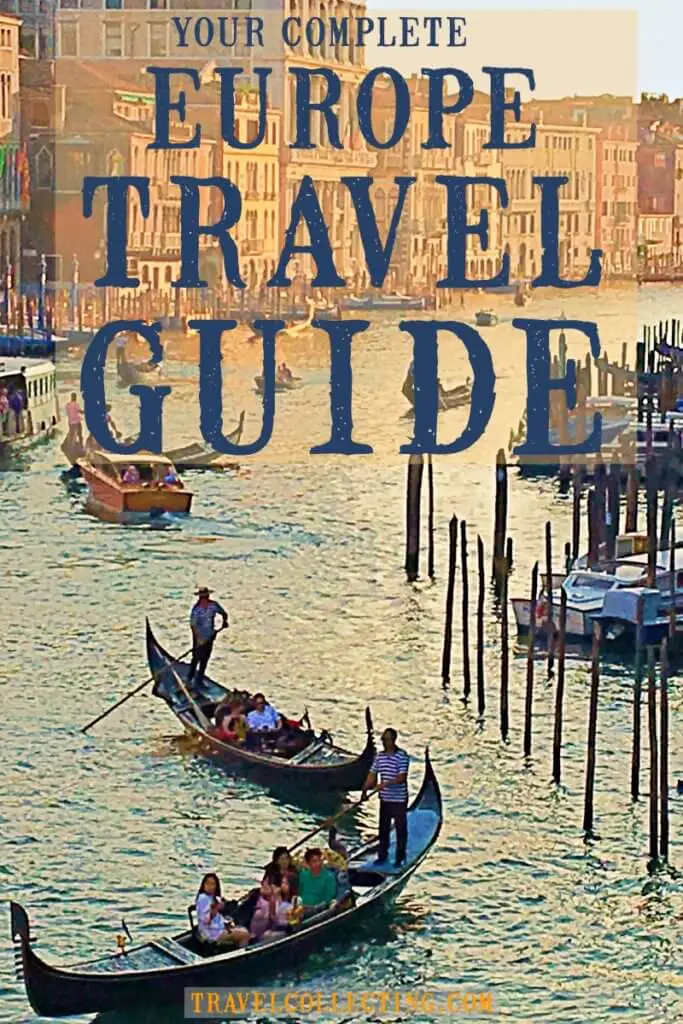

Travel Collecting is a participant in the Amazon.com Services LLC Associates Program. As an Amazon Associate I earn from qualifying purchases.







